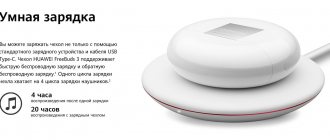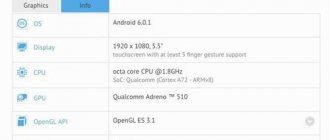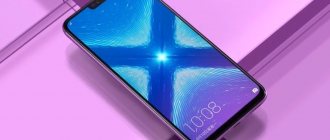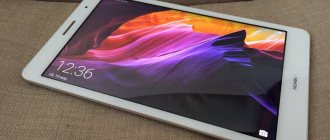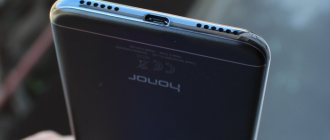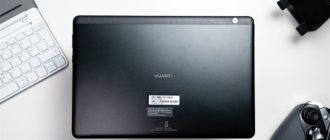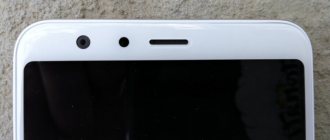Comparison of characteristics
| Snapdragon 821 | A10 Fusion | |
| Tech process | 14 nm | 16 nm |
| Cores | 64-bit, 4 cores 2x Kryo 2.4 GHz + 2x Kryo 2.0 GHz | 64-bit, 4 cores, 2x Hurricane 2.34 GHz + 2x Zephyr |
| Computations | per core | per cluster |
| Graphic arts | Adreno 530 GPU 650 MHz | 6-core graphics |
| RAM type | LPDDR4, 1866 MHz | LPDDR4 |
| 4G LTE | X12 LTE Cat 12/13 | no data |
| Charger | Qualcomm Quick Charge 3.0 | no data |
| Graphics support | OpenGL ES 3.2, Open CL 2.0, Vulkan 1.0, DX11.2 | OpenGL ES 3.0, Metal |
| Video | recording 4K Ultra HD video at a frame rate per second of 30 fps. Playing 4K/30fps video | recording 4K Ultra HD video at a frame rate per second of 30 fps. Playing 4K/30fps video |
| Codecs | H.264 (AVC) + H.265 (HEVC) | H.264 (AVC) + H.265 (for Facetime?) |
| WiFi | 802.11ac | 802.11ac |
Architecture
As can be seen from the table, both chipsets have a 64-bit architecture and 4 computing cores. This design was created by ARM, it is called big.LITTLE Heterogeneous Multi-Processing (HMP) and means that not all cores in the cluster are equal. The Snapdragon 821 has two cores clocked at 2.4 GHz per core and two at 2.0 GHz. The Apple chip uses the same design; the maximum processor clock speed reaches 2.34 GHz per core.
This is done so that the processor can provide maximum performance in heavy applications, and in weak processes preserve battery charge as much as possible. The Apple A10 Fusion is the first 4-core processor from the Cupertino company, which is built on the big.LITTLE architecture.
Artificial intelligence
When it comes to Artificial Intelligence, the Apple A11 Bionic combines both neural networks and machine learning. This means that instead of explicitly programming the chip how to sense the data, Machine Learning allows the device to read and learn from the data.
For example, this data is used to unlock a smartphone using Face ID, image recognition, voice and speech recognition, or when transferring facial information into animation.
In fact, this capability can even be extended to the health section by analyzing Apple Watches for heart health.
Qualcomm is no stranger to AI processing. Snapdragon 845 is the third generation mobile AI platform. The difference between the two chips is how they use Artificial Intelligence capabilities to get the job done.
Qualcomm is focusing on core optimization, which means the processor will be able to choose which core it will use for a specific job. This will mainly depend on what type of power is needed to complete the task at hand.
Fun fact: Snapdragon 845 performs tasks 3 times faster.
If we're talking about numbers, the Snapdragon 845 completes tasks 3 times faster than its big brothers. Overall, these features translate into better voice recognition, excellent camera features, and longer battery life.
The difference between the two leading chips of 2020 from an AI perspective ultimately lies in how fast they can perform while remaining power efficient.
Graphics and LTE modem
As for graphics, both chipsets use their own graphics system. Qualcomm Snapdragon 821 has an Adreno 530 GPU clocked at 650 MHz. Apple previously used PoweVR GPU graphics from Imagination Technologies. But with the 10 Fusion processor, it switched to a proprietary 6-core graphics chip. Apple graphics still don't have an official name.
The Snapdragon 821 supports OpenGL ES 3.2 and Vulkan 1.0, while the A10 Fusion supports OpenGL ES 3.0 and the Metal API (Apple's own). Another difference between the chipsets is the support for Quick Charge 3.0 fast charging in the SD 821 and its absence in Apple. Also, the Snapdragon 821 SoC has an on-chip X12 LTE modem, while the Apple A10 does not have a built-in LTE modem and uses a third-party solution on a separate chip.
History and features of the creation of A11 Bionic
Without wasting any time, the company's engineers began developing this CPU back in the days of the iPhone 6, which was then based on the A8 architecture. Yes, yes, the whole department worked three generations of hardware ahead. It's connected with:
- predicting market trends;
- in attempts (and very successful) to create these same trends;
- anticipating and developing those technologies, performance and device architecture that will be relevant at the time the processor is released.
So, for example, four years ago it was decided to add a neural engine to the crystal, which allowed the microprocessor to significantly increase the speed of calculations when working with tasks based on artificial intelligence and neural networks.
Performance
The Snapdragon 821 processor can be considered more productive, since for a relatively identical architecture and frequency, it is built on a smaller technological process (14 nm versus 16 nm). This will also have the positive effect of lower energy consumption. But in popular benchmarks like AnTuTu, Geekbench and Basemark OS III, the Apple A10 Fusion scores higher than the Qualcomm SoC.
It is worth noting that performance will still vary from device to device, because manufacturers use different degrees of hardware and software optimization, as well as different processor “body kits”: RAM and flash memory, etc.
Two cores are good, but four are better
Along with the addition of two additional cores, the following was added:
- A system for changing frequency and voltage in real time, and disabling both entire cores and individual computing units. This gave a lot of flexibility in both power consumption and processor performance;
- iPhone 7 has added a new controller that allows you to more efficiently distribute the load between the cores or load only some of them
- A special scheme was created for dividing the processor cache memory into each of the cores, which allows, when necessary, a separate core to solve problems independently, without accessing the cache memory of other cores
- Well, and of course the size of the third level of the processor memory cache was doubled from 4 to 8 megabytes.
Detailed results in AnTuTu benchmark
| AnTuTu Test | A10 Fusion | Snapdragon 821 |
| 3D | 44996 (28917, 16079) | 56890 (36443, 20447) |
| UX | 52071 (8168, 11180, 21587, 4528, 6617) | 45278 (8209, 4833, 9027, 19639, 3570) |
| CPU | 41655 (14512, 14632, 12511) | 32403 (12204, 8129, 12070) |
| RAM | 11568 | 6521 |
In AnTuTu, the difference between the performance of the chips is only 6%, but in the Geekbech single-core test the difference was 126% in favor of Apple. In AnTuTu, the Snapdragon 821 chip performed better only in the 3D test and scored 56,890 points, where the A10 Fusion received only 44,996 points.
Test results
Tests were carried out in the popular AnTuTu benchmark. The first to be tested was a chip from Apple. The results turned out to be quite expected for a processor of this class.
Results for A10 Fusion
The second one tested was the Qualcomm Snapdragon 845. And its results were also quite expected. He certainly didn't fall flat on his face.
Results for SD 845
From the above diagrams it becomes clear that the “dragon” is several times more powerful than the Apple chip.
Power consumption
The comparison was carried out on Apple iPhone 7 and Google Pixel smartphones. As you can see from the slide, the iPhone 7 performed better in 3D games and its battery retained more charge than the Google Pixel battery. At the same time, while watching videos on smartphones, Google's Pixel with Snapdragon 821 produced slightly better results than Apple's. From this we can conclude that although the SD 821 processor copes well with heavy games in terms of performance, it is still not the best solution for games in terms of battery life.
A10 Fusion and A11 Bionic processor comparison:
Of course, no world-class company can take full risks, since this is fraught with billions of dollars in losses, and all new chips, of course, are based on old developments added to new technologies.
But at the same time, Apple does not hesitate to rework, remove or add entire computing units, which adds room for maneuver, both in pricing policy and in terms of technology and performance.
The main technological differences between A11 and A10 crystal:
- Double the number of energy-efficient, economical cores. There were 2 of them in A10, 4 in A11 Bionic.
- The ability to use either one CPU core separately or all six at once.
- Of course, one, if not the most important, point is the transition to a 10-nanometer process technology, which allows:
- Increase the number of transistors by the same volume. This contributed to an increase in crystal power by 25% compared to A10.
- Increase the energy efficiency of the new mobile processor by an incredible 70%. Although this effect was achieved not only thanks to the new technical process, but also by doubling the number of economical cores, that is, the jump in energy efficiency was put in first place, and increasing productivity in second. However, no matter how you look at it, the technological leap is amazing.
Photo: Updated CPU cores on the total area of the A11 die
- Adding a built-in processing unit specialized in processing, improving the quality and suppressing “noise” in photographs. In addition, thanks to the new block, the processing of many photo effects has been accelerated. But the main feature of this computing unit was its support for video recording in 4K resolution at 60 fps or in FULL HD (1080) at an incredible 240 fps.
- The A11 processor received a new sound processing unit, which, according to the manufacturer, should significantly improve sound quality and more thoroughly remove noise and distortion.
- Adding a dual-core neural engine with a computational speed of 600 billion operations per second. This enabled much more efficient work on matrix multiplication problems to speed up and optimize specialized machine learning algorithms. In practice, it will be most widely used in technologies:
- Animoji;
- Face ID;
- virtual reality;
- portrait photography;
- for working with the Apple Core Library.
Photo: A11 Bionic image processor
- The last (but not least) difference from older versions of the processor is the use of its own GPU unit, developed entirely within Apple. It differs from the old ones, developed by Imagination Technologies, at the same time having almost a third higher performance, and at the same time reducing power consumption by almost half.
Photo: Apple's new graphics accelerator in the A11 Bionic

